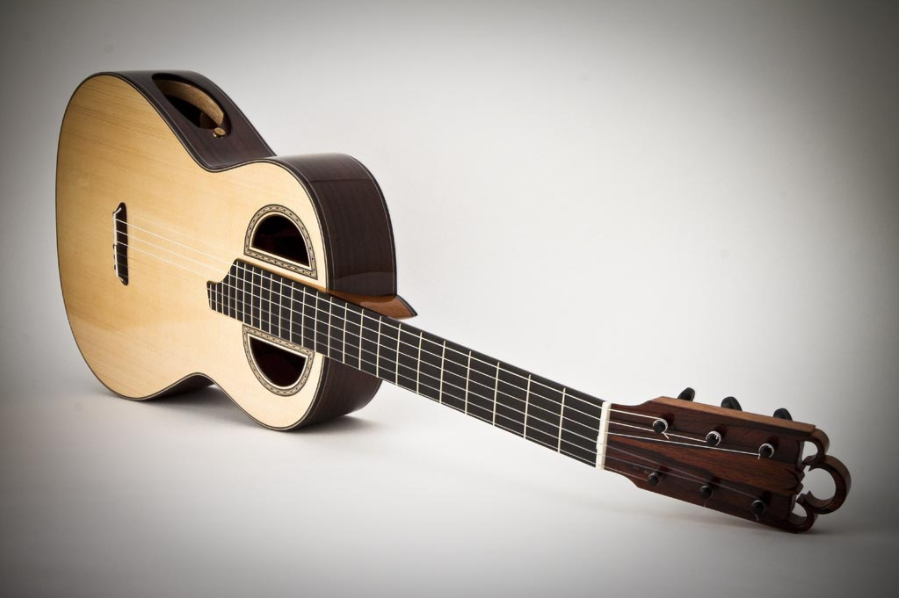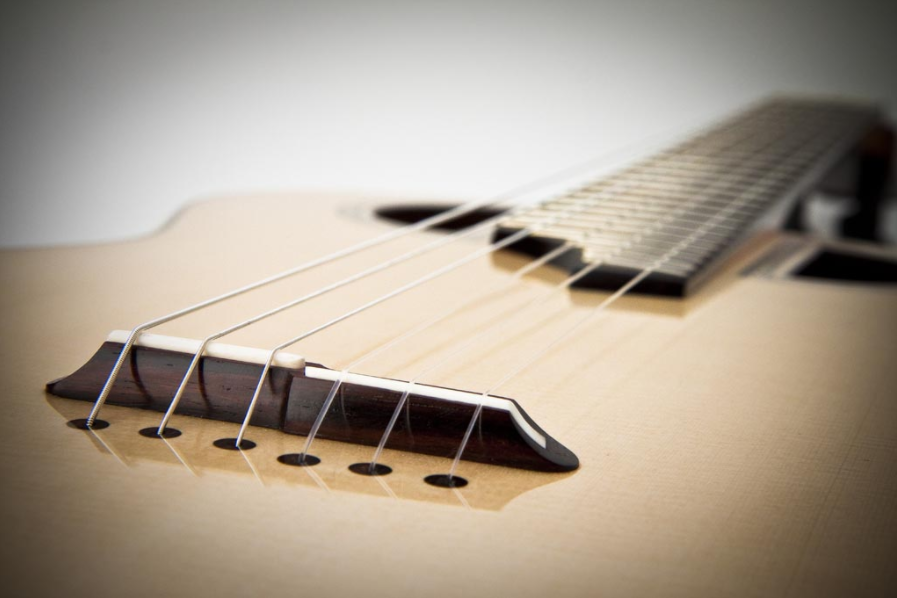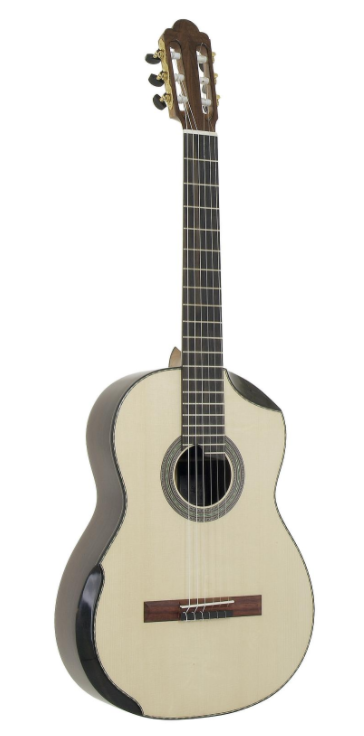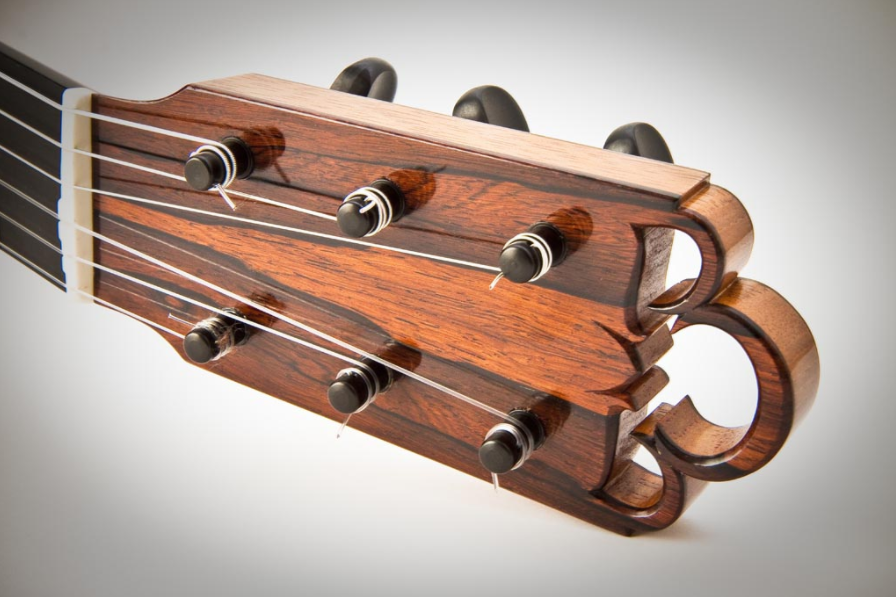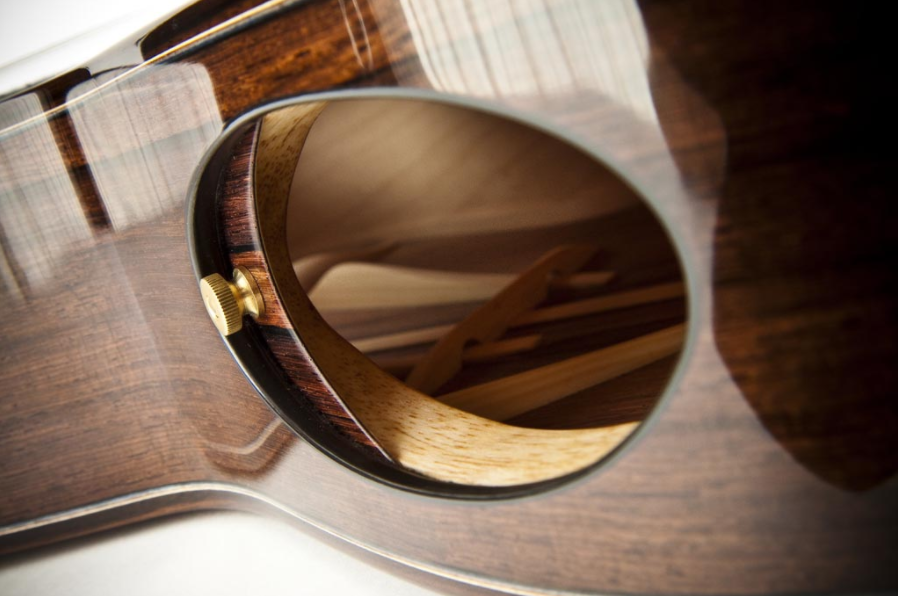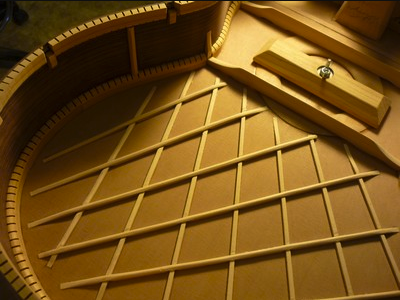Beautiful & Unusual Classical Guitars - Episode 5: Zebulon Turrentine 'No. 22'
Zebulon Turrentine has music & wood in his blood. From an early age he was surrounded by both. Now he has a degree in classical guitar performance and an enviable reputation as a master luthier. Read on to learn more about this wonderful craftsman and this prized guitar that was prize!
Introduction
Zebulon Turrentine has been around wood and music for his entire life. He was born in a log cabin in the USA so it seems as if it was fated that Zebulon would end up combining music and wood as beautiful and mellifluous instruments.
Awesomely Zebulon is not just a luthier but he's also a graduate performer with a Bachelor's degree in Classical Guitar Performance from Shenandoah University! How cool is that? To add to fate Zebulon's 6th grade teacher was the daughter of a fabulous guitar maker - Don Gallagher the son of J. W. Gallagher of Gallagher Guitar Co.
Specifications:
- Top - Western Red Cedar
- Back and Sides - African Mahogany
- Fretboard - West African Ebony
- Bridge - African Padauk
- Bracing - Asymmetric lattice
- French polish with shellac
- Scale length - 650mm
- Jumbo Gold EVO frets
The guitar was commissioned as the 1st prize for the University of Louisville Florida 2015 Guitar competition - and what a prize it truly was. There isn't too much information around about this guitar on Zebulon's website apart from why it was made, what is was made for, and what is was made from. However it doesn't matter as we have plenty of pictures to drool over.
How to get one for yourself?
Zebulon now has a workshop in Cookeville, Tennessee in the United States of America. He's happy for anyone to give him a call or stop by for lunch!
Don't miss my other blogs showcasing some of the world's most beautiful & unusual guitars.
Let your fingers fly!
Beautiful & Unusual Classical Guitars - Episode 1: Projection Guitar (Florian Vorreiter)
Florian Vorreiter is at the cutting edge of classical guitar design. Read on to discover more about his ideas & philosophy behind guitar construction.
Introduction
Every now and again we see a picture or watch a video and something within catches our eye & our imagination. A couple of months ago I was browsing through some Pinterest boards and I happened to see a picture of a classical guitar with a soundport that had a sliding door as part of its design. I was so intrigued that I immediately occupied myself with further research and discovered that the guitar was made by a German luthier called Florian Vorreiter.
It seemed that it was destiny for Vorreiter to become a luthier extraordinaire as his father restored museum instruments for several decades, and through his father's craft he was exposed to instrument repair, design, & construction going on to make & revolutionise not only classical guitar design but also acoustic guitars, lutes, & Baglama.
A love for art & music showed from an early age with Florian being an avid violinist and in later years an artist with a passion and penchant for air brushes, spray cans, and the humble pencil. These two passions have combined to create what I believe to be some of the most visually stunning classical guitars of the 21st century.
The picture above says it all about these guitars but I should take some time to show you some of the unique features of a Vorreiter guitar.
The 'Floating Bridge'
Ergonomics
Headstock
Soundport Ideas
To find out more about modern classical guitar designs and features be sure to check out my other blog articles here. To find out more about Florian Vorreiter's fabulous guitars and the man himself take the time to visit his website:
Florian Vorreiter
Modern Classical Guitar Design Part 5: Lattice Bracing
An exciting article explaining the history, development, and the pros & cons of classical guitars with lattice bracing.
Introduction
Up until a couple of decades ago most if not all classical guitars were constructed using the fan bracing method or variations thereof. Prior to that 'ladder bracing' was used in the smaller predecessors of the modern guitar. Once Antonio de Torres arrived on the scene the style of bracing for the soundboard changed with his radical new concept of braces splaying out in the shape of a fan. This style of bracing has been used successfully for almost two centuries and it is still probably the most common type of bracing used in classical guitar design today. However, in the 80s master Australian luthier Greg Smallman revolutionised the bracing system for the guitar soundboard by introducing a system known as 'lattice bracing'.
The glorious phenomenon with the guitar is that it is still evolving. It is a work in progress and it seems as though the rate of change and experimentation with its fundamental design is an ever-changing thing. There is probably no other instrument on earth that is made with such wildly varying designs, shapes, patterns, styles, sizes, materials and so on. Guitar luthiers seem like a wild bunch always pushing the boundaries of guitar style, design, and most importantly - sound.
What does a classical guitar fan brace look like?
In the picture below you can see a wonderful example of fan bracing used to support the top. The braces all 'fan' out towards the edges of the soundboard hence the term 'fan bracing'. There are several well-known variations to the basic Torres design:
- Amadeo
- Bouchet (pictured below)
- Cordoba
- Esteso
- Panormo
- Tatay
- Yacobi
These innovations do have an impact on the tones and frequencies that are projected and amplified by the guitar itself. The traditional 'ladder bracing' ran at a 90degree angle to the soundboard grain produce a thinner, treble biased sound somewhat similar to that of the lute. The Torres 'fan bracing' combined with a larger body and thinner top produced warm instruments with an enhanced bass response and projection.
Enter Greg Smallman - Bearded luthier extraordinaire with his revolutionary 'lattice bracing' innovation. Three decades ago Australian Greg Smallman irreversibly changed the design of classical guitar bracing by introducing a system of overlapping struts all joined together using a combination of carbon fibre and balsa wood in a 'lattice' framework joined to a top that is much thinner than tops using the conventional Torres bracing. The result is a guitar with extraordinary clarity, even and consistent frequency response & fuller tone.
Pros & Cons of a lattice-braced guitar
Pros:
- Loud. An increase in volume offers the guitarist more dynamic possibilities
- Sustain for days
Cons:
- Non-traditional tone (sometimes described as nasal)
- Too Lound (is there even such a thing?)
Famous players that play lattice braced guitars
- John Williams
- Xuefei Yang
- Carlos Bonnel
- Timothy Kain
- Stepan Rak
- David Tannenbaum
A wonderful example of the power of a lattice braced guitar can be heard in John Williams' documentary 'The Seville Concert'. John visits Greg Smallman at his home in NSW, Australia. During their meeting John plays a snippet of the third movement of the 'Concerto in D RV230' by Antonio Vivaldi after they've visited Smallman's workshop. The power and clarity displayed by that instrument during that wee snippet is undeniable.
In conclusion
At the end of the day the most important thing is how the guitar makes you feel. Choose a guitar that suits you not because it has some cutting-edge design features or because of its brand.
Check out my other articles in the
'Modern Classical Guitar Design Series':
Part 8: Fanned Frets
Part 7: Arched back
Part 6: Double Tops
Part 4: Armrest
Part 3: Soundport
Part 2: Indented Cutaway
Part 1: Elevated Fingerboard
Let your fingers fly!








